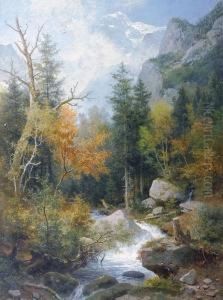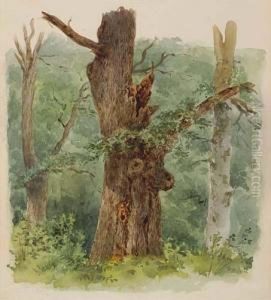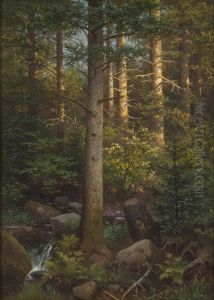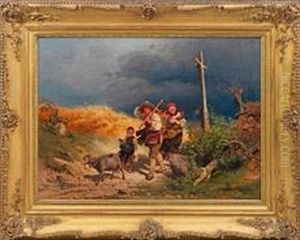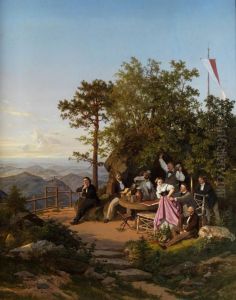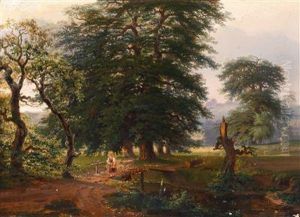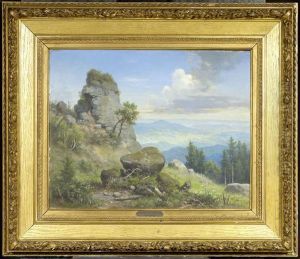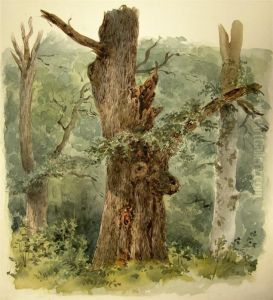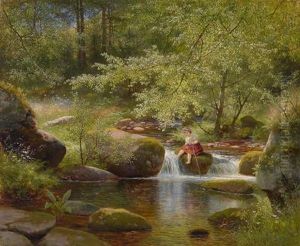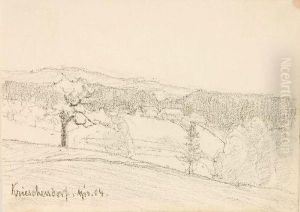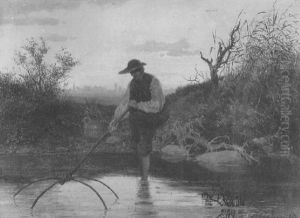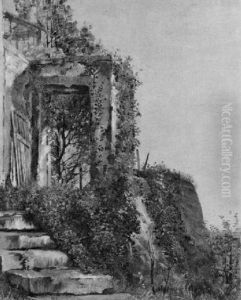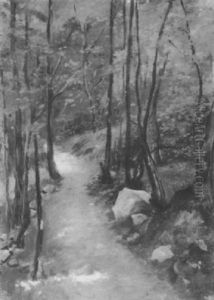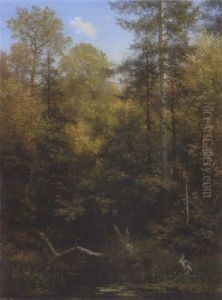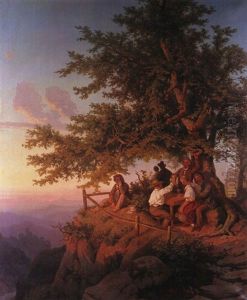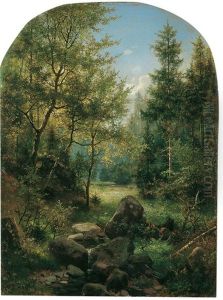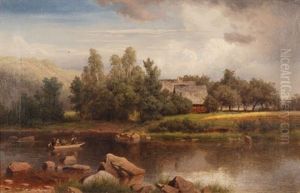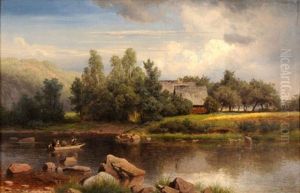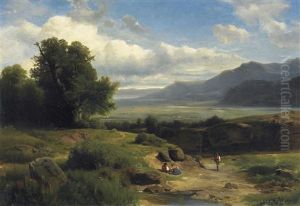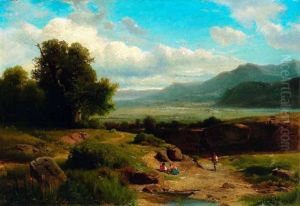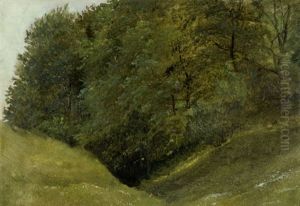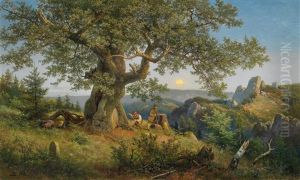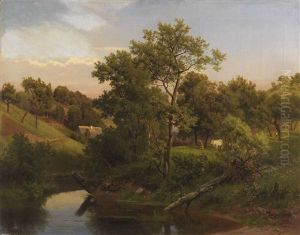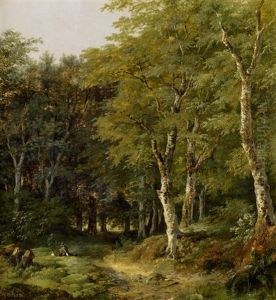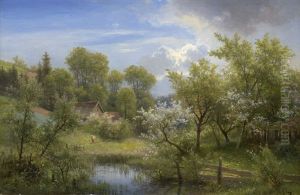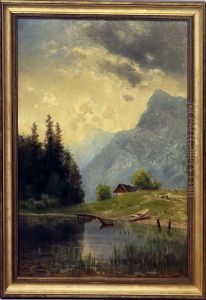Eduard Emil August Leonhardi Paintings
Eduard Emil August Leonhardi was a distinguished German landscape painter, born on October 31, 1828, in Dresden, Germany. Coming from a family with a strong artistic background, Leonhardi was exposed to the world of art from a young age. He embarked on his artistic training at the Dresden Academy of Fine Arts, where he was influenced by the Romantic tradition, particularly the works of Caspar David Friedrich. Leonhardi's style, however, evolved beyond Romanticism, incorporating elements of realism that he honed during his travels and studies across Europe.
His extensive travels across the continent, especially in the Alps and Italy, significantly shaped his artistic vision. Leonhardi's landscapes are notable for their meticulous attention to detail, vibrant color palette, and the evocative portrayal of natural light, capturing the sublime beauty of nature. His works often reflect a serene and harmonious relationship between humanity and the natural world, a theme that resonated with the sentiments of the time.
Leonhardi was not only a prolific artist but also a key figure in the Dresden art scene. He was a founding member of the Dresden Artists' Association, an institution that played a crucial role in promoting modern art in Germany during the late 19th century. Through his involvement with the Association, Leonhardi fostered a supportive community for artists, encouraging innovation and the exchange of ideas.
Despite his contributions to the art world and the recognition he received during his lifetime, Leonhardi's work was somewhat overshadowed by other contemporaries in the years following his death on October 1, 1905. However, in recent decades, there has been a renewed interest in his oeuvre, with art historians and collectors appreciating the unique qualities of his landscapes and his role in the development of German landscape painting.
Leonhardi's legacy is preserved through his works housed in various museums and collections across Germany and beyond. His dedication to capturing the essence of the natural landscape, combined with his influence on the art community in Dresden, cement his place as a significant figure in the history of 19th-century European art.
